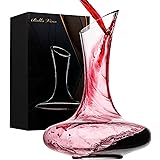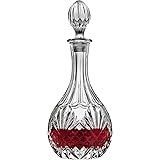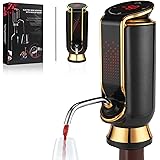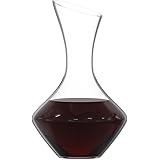The Ultimate Food and Wine Pairing Guide: Elevate Your Culinary Experience
Have you ever found yourself standing in the wine aisle, bewildered by the endless options, wondering which bottle will perfectly complement your dinner? Achieving an exquisite food and wine pairing can transform a simple meal into an unforgettable culinary event. While the accompanying video offers an excellent primer, understanding the nuanced principles behind successful wine pairing allows for greater confidence and enjoyment in your selections. This comprehensive wine pairing guide delves deeper into the art and science of matching flavors, ensuring your next meal is truly exceptional.
Indeed, the selection of the correct wine for a particular dish is often perceived as a daunting task. However, with a foundational understanding, this process can become an intuitive and pleasurable part of meal preparation. It is crucial to remember, as highlighted in the video, that the wine will pair with the most prominent flavor component of the dish, not necessarily the main protein. Consequently, attention must be paid to sauces, seasonings, and even sides, as these elements frequently dictate the optimal wine choice.
Mastering the Fundamentals of Wine Pairing
Before exploring specific grape varietals, it is beneficial to grasp the overarching principles that govern effective food and wine pairing. These principles are systematically applied by sommeliers and culinary experts worldwide to create harmonious flavor profiles. Understanding these concepts allows for informed decisions, even when encountering unfamiliar dishes or wines. Ultimately, the goal is to achieve balance, where neither the food nor the wine overpowers the other, but rather they elevate each other’s intrinsic qualities.
Understanding Weight and Body in Wine Selection
One of the most fundamental principles involves matching the weight or body of the wine with the richness or intensity of the food. Light-bodied wines, often characterized by lower alcohol content and delicate flavors, are best suited for lighter dishes. For instance, delicate seafood or fresh salads are beautifully complemented by such wines. Conversely, full-bodied wines, which tend to be higher in alcohol and possess more robust, concentrated flavors, are required to stand up to hearty stews, rich red meats, or heavily sauced dishes. A mismatch in body can lead to a pleasant wine being completely overshadowed or a delicate dish being overwhelmed.
The Role of Acidity and Tannins in Culinary Pairings
Acidity in wine is a critical component, contributing to freshness and acting as a palate cleanser. High-acid wines, such as Sauvignon Blanc or Riesling, are particularly adept at cutting through rich, fatty, or oily foods. The tartness effectively balances the richness, preventing the palate from feeling fatigued. Furthermore, acidity is complemented by tart or acidic foods, enhancing both the food’s and wine’s vibrant characteristics. In contrast, tannins, primarily found in red wines, create a drying sensation in the mouth. These polyphenols react with proteins and fats, making tannic wines excellent partners for rich meats like steak, where the tannins can bind to the fat and soften the wine’s astringency.
Considering Sweetness and Flavor Intensity
The sweetness of a wine is another vital factor; a general rule dictates that the wine should always be sweeter than the food it accompanies, especially when pairing with desserts. If the wine is less sweet, it will taste bitter or sour. Moreover, the flavor intensity of both the food and the wine must be considered. A highly aromatic and intensely flavored wine should be paired with a dish that can stand up to its boldness, preventing either component from being lost. Conversely, subtle dishes require wines with delicate aromatics to ensure a balanced tasting experience. This congruence in intensity contributes significantly to a successful pairing.
Exploring Specific Wine Varietals and Their Ideal Pairings
With these foundational principles in mind, a deeper exploration of specific wine varietals mentioned in the video can be undertaken. Each wine possesses a unique profile that lends itself to particular culinary partnerships. These recommendations serve as excellent starting points for your own wine pairing experiments, encouraging a more adventurous approach to your dining experiences.
Chardonnay: A Versatile White Wine
Chardonnay is an incredibly versatile grape, its profile varying significantly based on terroir and winemaking techniques. As noted, it pairs exquisitely with lighter meats, such as seafood and poultry, particularly when prepared with lighter-bodied sauces. An unoaked Chardonnay, often crisp with notes of green apple and citrus, complements delicate white fish, oysters, and light cream sauces. However, an oaked Chardonnay, known for its buttery, vanilla, and toasted nut flavors, requires richer dishes like roasted chicken, lobster with butter sauce, or even mushroom risotto. The texture and richness of the wine must always be mirrored in the food for optimal harmony.
Pinot Noir: The Earthy Elegance
The distinctive characteristics of Pinot Noir make it an exceptional choice for dishes with earthy undertones. Its delicate fruit notes, often reminiscent of cherry or raspberry, are beautifully intertwined with savory, mushroom, and forest floor aromas. Consequently, as the video suggests, it works wonderfully with mushroom-centric dishes, including mushroom gravy, pizzas topped with various fungi, or even meatloaf prepared with an earthy glaze. Furthermore, its relatively low tannin structure allows it to be paired with lighter red meats, poultry like duck, or even certain firm, flaky fish. The elegance of Pinot Noir is preserved when paired with foods that complement its subtle complexities.
Pinot Grigio: Crisp and Refreshing
Another excellent option for light fare is Pinot Grigio. This wine is celebrated for its crisp, dry, and often citrus-driven profile, frequently displaying notes of green apple, lime, and a subtle minerality. It is, therefore, perfectly suited for light seafood preparations, fresh salads, and dishes featuring light, herb-based sauces. The refreshing acidity of Pinot Grigio effectively cleanses the palate, making it an ideal companion for delicate flavors that would be overpowered by a heavier wine. It truly embodies a bright and invigorating aspect of white wine selection.
Sauvignon Blanc: Aromatic and Zesty
Sauvignon Blanc is renowned for its vibrant acidity and distinctive aromatic profile, which can include notes of gooseberry, passionfruit, bell pepper, and fresh herbs. The video correctly identifies its affinity for tart flavors. This makes it an outstanding partner for dishes featuring ingredients like goat cheese, asparagus, artichokes, or dishes dressed with vinaigrettes. While often paired with pies or desserts in general terms, it truly excels with fruit tarts or desserts that have a pronounced tart component, as its acidity can beautifully echo and enhance those flavors. It is a brilliant choice for freshening the palate.
Rosé: The Ultimate Versatile Performer
The unique position of Rosé in the wine spectrum, embodying the acidity and freshness of white wine with the fruit characteristics of red wine, renders it incredibly versatile. As articulated, its balanced profile makes it a superb companion for various cheeses. The acidity cuts through the richness of many cheeses, while the red fruit notes complement their savory complexity. Beyond cheese, Rosé can be brilliantly paired with grilled seafood, Mediterranean cuisine, charcuterie boards, and even lighter barbecue dishes. Its adaptability ensures it can bridge the gap between white and red wine preferences, making it a reliable choice for diverse dining scenarios.
Riesling: The Sweetness and Spice Ally
Riesling is an extraordinary varietal, celebrated for its aromatic intensity, vibrant acidity, and remarkable ability to span the spectrum from bone-dry to lusciously sweet. Its pairing with spicy flavors, as mentioned, is particularly noteworthy. The inherent sweetness often found in many Rieslings provides a cooling counterpoint to the heat of spicy dishes, such as Thai, Indian, or Mexican cuisine. Furthermore, its high acidity ensures the wine remains refreshing and never cloying. Even dry Rieslings, with their intense fruit and mineral notes, can beautifully complement various poultry and pork dishes, showcasing the varietal’s impressive range.
Cabernet Sauvignon: The King of Reds for Rich Meats
Finally, Cabernet Sauvignon stands as a powerful and structured red wine, characterized by its deep color, firm tannins, and flavors of blackcurrant, cedar, and often a hint of bell pepper. Its robust nature makes it the quintessential pairing for richer meats, especially steak and beef. The high tannin content of Cabernet Sauvignon effectively cuts through the fat and protein of these meats, softening the wine’s astringency and enhancing the savory notes of the dish. Moreover, its strength allows it to stand up to meatier vegetables, such as grilled portobello mushrooms or roasted root vegetables, as correctly identified. It is a choice that signifies a truly opulent culinary experience.
Beyond the Plate: Enhancing Your Dining Experience
The journey of food and wine pairing is an ongoing exploration, one that rewards curiosity and experimentation. While these guidelines provide a strong framework, personal preference ultimately plays a significant role in what is deemed a ‘perfect’ match. Therefore, do not be afraid to deviate from conventional wisdom occasionally and discover your own delightful combinations. The art of pairing extends beyond merely matching flavors; it also involves considering the overall dining occasion, the season, and even the company. A well-chosen wine can transform a simple meal into a memorable celebration, creating an atmosphere where food, drink, and conversation flow effortlessly.
Indeed, understanding how different wines interact with various ingredients empowers you to make more confident and enjoyable selections. The nuances of acidity, tannins, sweetness, and body are not merely technical terms but rather tools for enhancing your palate’s experience. By applying these principles, whether you are preparing a gourmet feast or a casual weeknight dinner, the right food and wine pairing can elevate the entire culinary affair, making every bite and every sip a moment to savor.







